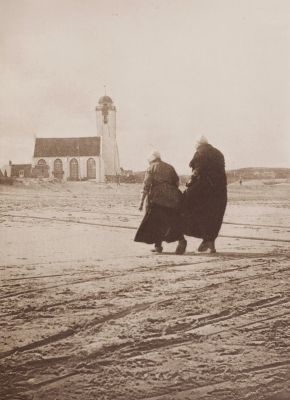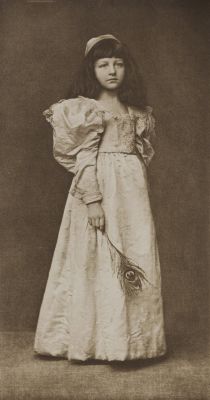
Title
SpringArtist
White, Clarence H. (American, 1871-1925)Publication
Camera Notes Vol. 3 No. 2Date
1899Process
PhotogravureAtelier
Photochrome Engraving Company, New YorkImage Size
13.7 x 12.5 cm
Among the challenges faced by artist-photographers of about 1900 was how to make photographs that would share with painting and the other graphic arts the decorative function that they often performed. White’s Spring is inherently ornamental in its strongly patterned shapes and three-part composition; but the model’s evocative gesture and expression assure a touching human element. The design is similar to the compartmentalized stained-glass windows that were popular about 1898, when this print was made; yet artists working in glass could rarely achieve the tantalizing combination of literally rendered space and implied space seen here. [1]
It is the handling of the tones of a picture as a whole, so as to impart delicacy, as the luminous gray-key of White’s remarkable and beautiful picture, "Spring," which imparts to it all the feeling of tenderness and youth. Camera Notes v2 no4
Reproduced / Exhibited
The Metropolitan Museum of Art Bulletin, Spring 1978
Homer, William I, Catherine Johnson, and Alfred Stieglitz. Stieglitz and the Photo-Secession, 1902. London: Penguin Putnam, 2002.
References
[1] The Metropolitan Museum of Art Bulletin Spring 1978


